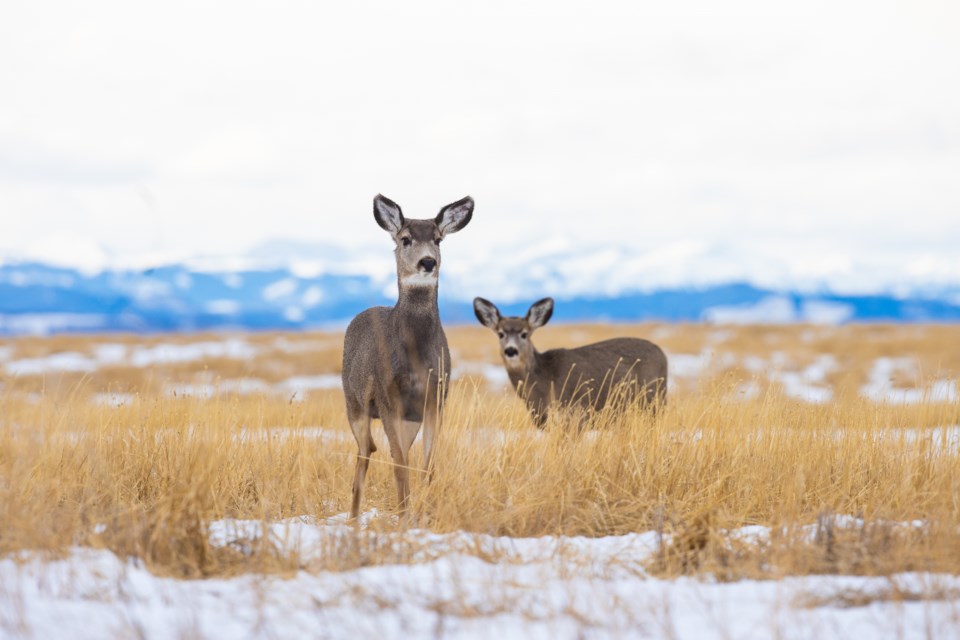It might not have hit a critical mass yet, but it’s definitely trending in that direction.
The Town of Okotoks' 2025 deer count found there are 155 of the mule variety in our midst these days, which is up 12 per cent from last year and a not-so-insignificant 135 per cent from the first count a decade ago.
Okotoks’ deer population elicits strong responses, both positive and negative, so any discussion about what is an appropriate number to be roaming around town is unlikely to reach much of a consensus. Regardless of where you might stand on the issue, it’s safe to say that as their numbers grow, so too does the probability of negative outcomes.
The larger the population, the greater impact deer will have on private landscaping and the greater likelihood of unwanted interactions with people, vehicles and pets.
At this juncture, the issues are largely manageable, although gardeners might not agree with that assessment, but what would the situation be like if the deer population was substantially bigger?
If the herd increases at the same rate it has over the last 10 years, it would grow to north of 350 a decade from now, and given ample food and a lack of predators, it’s entirely possible the population could increase at an even greater rate.
If left unchecked, the numbers will grow to such an extent, and the negative interactions will become so frequent, that Town officials will have no choice but to take some sort of action.
We’re not there yet, but make no mistake, we’re headed in that direction, so is it better to deal with the issue now or wait a decade until the herd is that much larger?
Or are we hoping chronic wasting disease makes that decision a moot point?




